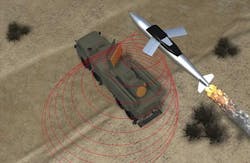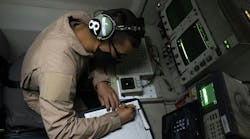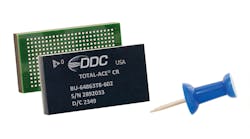Officials of the Air Force Research Laboratory (AFRL) at Kirtland Air Force Base, N.M., released a solicitation Tuesday (BAA-RVKD-2014-0003) for the source and antenna portion of the High-Powered Electromagnetics (HPEM) research program.
The overall HPEM project seeks to develop high-power electromagnetics technologies not only for directed-energy weapons, but also for cyber warfare, electronic warfare (EW), electronics-killing weapons, power electronics, and antennas.
Tuesday's solicitation is for the technical area 6: NextGen HPEM portion of the HPEM program. For power source and antenna technologies, it seeks to develop broadband high-power amplifiers, tunable high-power oscillators, and broadband antennas.
These components and subsystems should apply to RF effects weapons for different-sized military platforms that work over a broad range of frequencies, pulse lengths, pulse repetition frequencies, and power densities, Air Force researchers say.
Related: Air Force wants ideas for high-power directed-energy weapons
This portion of the HPEM program should be worth about $12 million between now and 2019, officials say. High-power microwave weapons focuses microwave energy on targets to damage or destroy them. They can be used for anti-personnel weapon, missile defense, and disabling lightly armored vehicles like cars, drones, jet skis, and cell phones.
Work will center on tunable HPEM oscillators; broadband HPEM amplifiers; increased efficiency sources; radiating structures for these sources; and recommended infrastructure research to investigate these new HPEM technologies safely, including repetitive pulsed power, electromagnetic interference (EMI), and ionizing and non-ionizing radiation.
These efforts will include analytics; simulation; developmental design drawing; component fabrication; system assembly and operational checkout for pulsed power drivers required for HPEM devices; vacuum electronics including vacuum diodes and microwave circuits; and HPEM loads, interfaces, antennas.
The overall HPEM program is sponsored by the High-Powered Electromagnetics Division of the AFRL Directed Energy Directorate at Kirtland Air Force Base.
Related: Worldwide directed-energy weapons market to reach $24.31 billion over the next five years
It has six technical areas, which in addition to NextGen HPEM include HPEM Transition; HPEM Cyber/Electronic Warfare (EW) Applications; HPEM Effects; Electromagnetics (EM) Weapons Technology; and Numerical Simulation.
HPEM Transition is developing concepts for HPEM systems, components, and information, including the feasibility of integration and development of HPEM technology into a platform.
HPEM Cyber/Electronic Warfare (EW) Applications is developing HPEM technologies for the cyber and electronic warfare communities.
HPEM Effects is investigating the effects of HPEM against a broad range of electronics, and develop predictive models for HPEM battle damage.
Electromagnetics (EM) Weapons Technology is moving new HPEM technologies into pulsed-power weapons, including developing compact repetitive pulsed-power topologies; investigating high-energy particle beams; and creating weak and strongly ionized plasmas using ultrashort pulse lasers (USPL).
Related: New Russian directed-energy weapon could complicate U.S. military strategic planning
Numerical Simulation is developing simulation to help develop modern HPEM systems and the Improved Concurrent Electromagnetic Particle-in-Cell (ICEPIC) software.
Those interested in Tuesday's solicitation should send proposals in hard copy and on CD no later than 10 June 2016 to the Air Force's William "Greg" Davis, AFRL Det 8/RVKDP, 3550 Aberdeen Ave SE, Bldg. 499, Kirtland AFB, NM 87117-5776. The Air Force will not accept email or fax proposals.
A site visit to the Air Force Phillips Lab in Albuquerque, N.M., tentatively is scheduled for 6 May 2016. Those interested in attending should notify the Air Force's Pearl Solano no later than 2 May 2016 by email at [email protected], or by phone at 505-853-6494.
For questions or concerns on this project phone William "Greg" Davis at 505-846-4626, or Pearl Solano at 505-853-6494. More information is online at https://www.fbo.gov/spg/USAF/AFMC/AFRLPLSVD/BAA-RVKD-2014-0003/listing.html.



